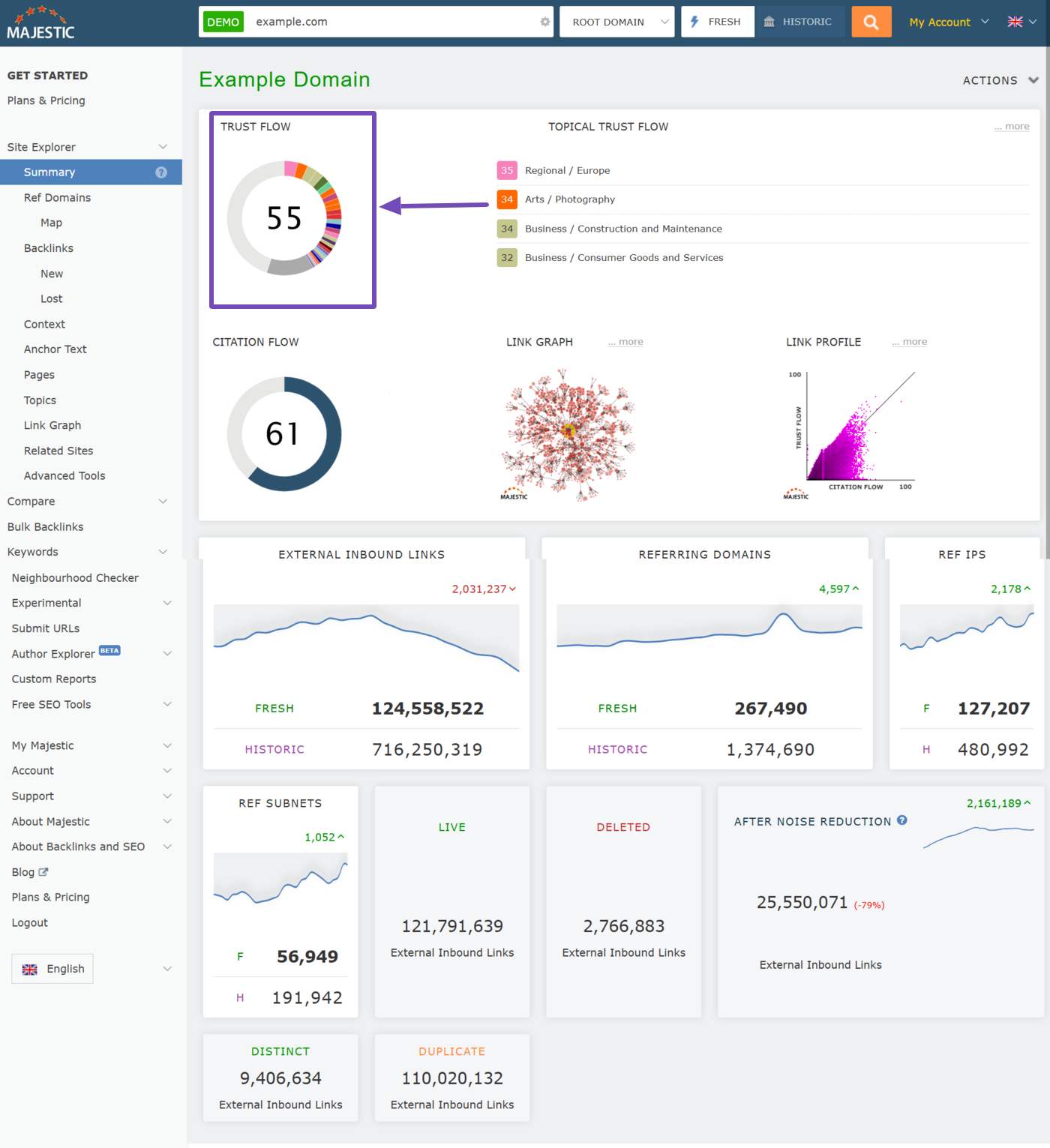What Is Trust Flow?
Trust flow is an SEO metric that evaluates the strength of a webpage based on the quality of its backlinks. In other words, trust flow measures the quality of the backlinks pointing to a URL.
The trust flow is evaluated on a scale that goes from 0 to 100. A higher trust flow indicates that the site is receiving links from trustworthy and authoritative sites on the web.
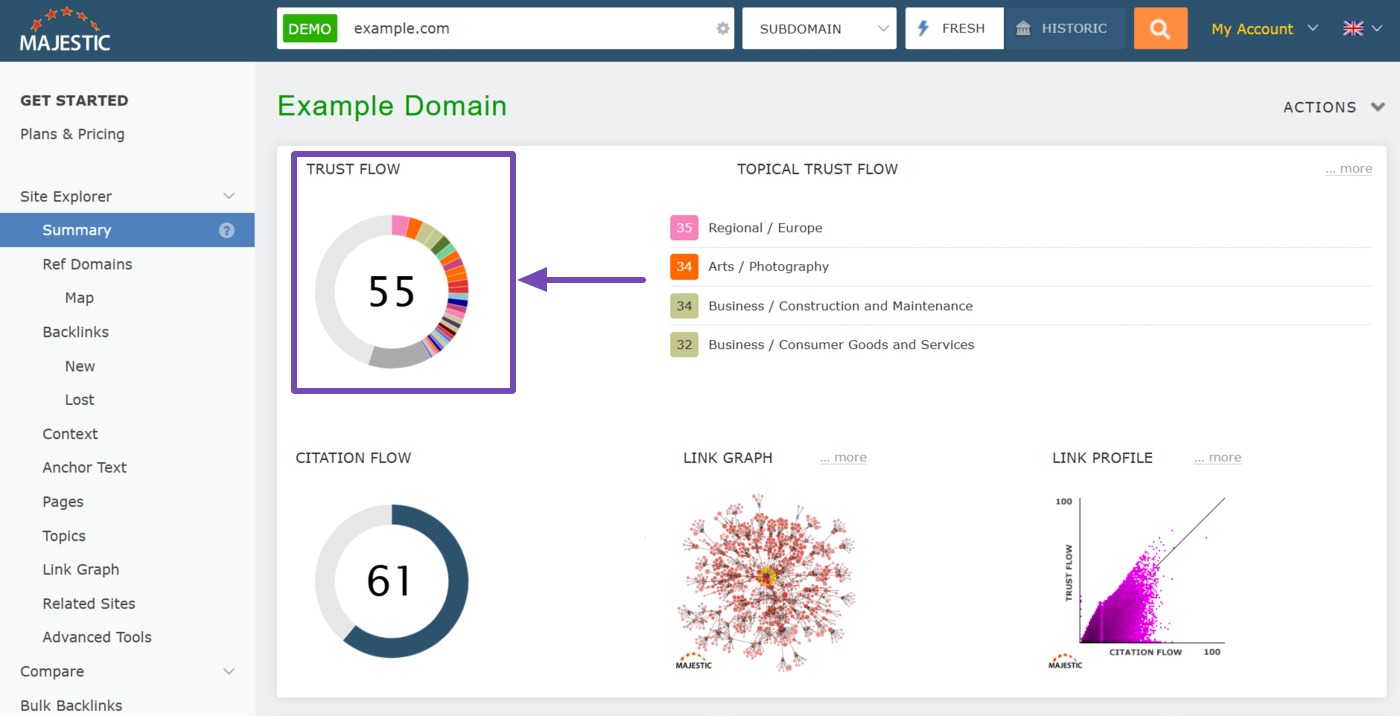
Trust flow was developed by Majestic and is evaluated using their SEO tool. It is not a factor de clasificación and is not used by search engines like Google and Bing.
In this article, we’ll cover:
What Is a Good Trust Flow Score?
There is no good or bad trust flow score.
While bloggers will expectably prefer a trust flow closer to 100, such high trust flows are almost impossible to achieve unless you are a very high authority site with years of presence and considerable amounts of original and high-quality content.
Instead, what you will consider a good trust flow score depends on your niche and competition.
For instance, if your competitors have a trust flow that ranges between 20 and 30, then that is the trust flow for that niche, and you, too, will strive to achieve a trust flow between those scores.
This means:
- If your trust flow is lower than 20, then you will want to increase it
- If it is higher than 30, you likely rank higher than your competitors and are at the top of your niche
Importance of the Trust Flow Metric
The trust flow metric allows bloggers to evaluate the quality of vínculos de retroceso pointing to their URLs. This is helpful for assessing the strength of a URL, reviewing its potential SEO performance, or just assessing the effectiveness of a link building campaign.
The trust flow can also be used to identify potential and desired link sources, as well as identify undesired and spammy links. Bloggers can also use it to for competitor research.
However, note that search engines do not use the trust flow metric. So, it has no effect on the strength of a URL or the rankings of a site on páginas de resultados de búsqueda.
Instead, bloggers use it (alongside other metrics such as the citation flow) as a proxy for actual SEO metrics, such as Rango de página, which is not publicly available.
Talking of the citation flow, it is a Majestic SEO metric that measures the number of backlinks pointing to a URL.
Relationship Between Trust Flow and Citation Flow
Trust flow and citation flow are two related, but distinct backlink-related metrics developed by Majestic. The major difference between them lies in how they evaluate the backlinks:
- Trust flow measures the calidad of the backlinks
- Citation flow measures the quantity of backlinks
Majestic expects bloggers to use both metrics to evaluate the strength and trustworthiness of their backlinks.
While quality (trust flow) is more important than quantity (citation flow) when it comes to backlinks, quantity cannot be ignored since it can provide context and deeper insights into the backlinks.
For instance, if a site has a high citation flow but a low trust flow, it may be a sign that many of those links are from low-quality, spammy, or irrelevant URLs.
How Majestic Evaluates the Trust Flow
Majestic evaluates the quality of the backlinks pointing to a URL and then assigns them a trust flow score between 0 and 100.
Backlinks that originate from authoritative and high-quality pages with a considerable number of backlinks typically pass more trust flow than those from less authoritative pages with fewer links pointing to them.
The trust flow scale is also logarithmic. This means the trust flow becomes harder as it increases.
In other words, it is easier to go from 5 to 15, but harder to go from 15 to 25. Similarly, it is easier to go from 15 to 25 than it is to go from 25 to 35.
That said, Majestic evaluates the trust flow per URL. The scores of the URLs on the site are then evaluated together to calculate the trust flow score for the subdomains and the domain.
Factors That Affect the Trust Flow
The trust flow of a URL can be affected by various factors. These factors can, in turn, affect the trust flow that those URLs pass to other URLs. We will list some of them below.
1 Link Equity of the Linking Page
Link equity, also known as link juice, refers to the value and authority a webpage passes to the webpages it links to.
Webpages with more link equity typically have a higher trust flow than those with lower link equity. So, these sorts of webpages will pass more trust flow when they link to you.
2 Backlinks of the Linking Page
The backlinks of the pages that link to you matter. The higher the quality of their backlinks, the higher the quality of the trust flow that they send to you.
In other words, pages with high-quality backlinks pointing to them are likely to pass more trust flow to the URLs they link to.
3 Internal Links from Your Own URLs
The trust flow takes enlaces internos into account. So, a page can pass trust flow to another page on the same site.
This means sites with a strong internal linking strategy will typically pass trust flow to multiple other pages on their own site.
How to Use Trust Flow for SEO
The trust flow provides valuable insights into your SEO and even that of your competitors. However, you will have to compare it against the historical trust flow of that URL or some other metrics, such as the:
- Citation flow
- Referring domains
- External referring URLs
- External inbound links
1 Compare Your Trust Flow Score over a Period
You can also review your own trust flow score over time. This helps to evaluate the performance of your SEO efforts.
When your trust flow increases, it means you have earned some quality referrals over time. Similarly, when it drops, it means you have lost some valuable backlinks.
2 Compare Your Trust Flow and Citation Flow
The citation flow measures the number of backlinks pointing to a URL, while the trust flow measures the quality of those backlinks.
- A high trust flow indicates you have high-quality backlinks
- A low trust flow indicates you are not getting high-quality backlinks
Comparing your trust flow with your citation flow can provide new insights into your backlinks. Por ejemplo:
- A low trust flow and low citation flow indicate you are not getting enough backlinks
- A low trust flow and high citation flow indicate you have too many low-quality backlinks
- A high trust flow and low citation flow indicate you have a small number of high-quality backlinks
- A high trust flow and high citation flow indicate you have a good number of high-quality backlinks
Depending on the result, you can then proceed to take a closer look at your link building and SEO.
For instance, a low trust flow but high citation flow can indicate an ongoing or potential SEO issue. It is best to look into your backlinks in this case, especially if you recently built, or hired someone to build, them to your site.
3 Compare Your Trust Flow with Other Metrics
Majestic also reports some other metrics. You can further compare these metrics against your trust flow to uncover additional information that can he helpful to your link building efforts.
a. Referring Domains
Referring domains specify the number of websites that have at least one backlink pointing to you.
When you receive a backlink from a site, your referring domains count will increase by one, irrespective of the number of backlinks you receive from the site. If that site links to you again in the future, your referring domains count will not increase.
b. External Referring URLs
The external referring URLs metric specifies the number of webpages (on other sites other than yours) that link to your URL.
For example, if a website has three different webpages linking to you, it will count as three external referring URLs. However, your referring domains will be one.
c. External Inbound Links
The external inbound links indicate the number of backlinks pointing to the URL. It counts each backlink individually, even if they originate from the same webpage.
This means if a URL has a hundred backlinks, the external inbound links count will be 100, irrespective of whether the URLs come from the same site or page.
4 Compare Your Competitor’s Metrics over a Period
The trust flow allows you to evaluate your competitor’s SEO and backlink efforts.
If your competitor has a high trust flow score despite having a lower citation flow score, it means they are receiving more backlinks from high-authority sites than you are.
You can also compare your competitor’s trust flow and citation flow scores against other metrics, including their referring domains, external referring URLs, and external inbound links.
You can use this to identify their top links, which gives you insights into their SEO and backlinking campaign. You can then use this to improve your own SEO and backlinking strategy.
How to Check Your Trust Flow
You can check your trust flow using the Majestic site explorer or the Majestic backlink analyzer. (We recommend the backlink analyzer.)
1 Majestic Backlink Analyzer
The first step is to download and install the Majestic backlink analyzer extension on your browser.
- If you use Firefox, download it here
- If you use a Chromium browser like Chrome, Edge, Brave, or Opera, download it here
After installing the extension, head to the URL you want to analyze and click on the Majestic Backlink Analyzer icon.
![]()
It will reveal the trust flow score for that URL, subdomain, and root domain, as shown below.
- URL: Indicates the trust flow of that specific URL
- Subdomain: Indicates the trust flow of the entire subdomain
- Root domain: Indicates the trust flow of every URL and subdomain on that domain
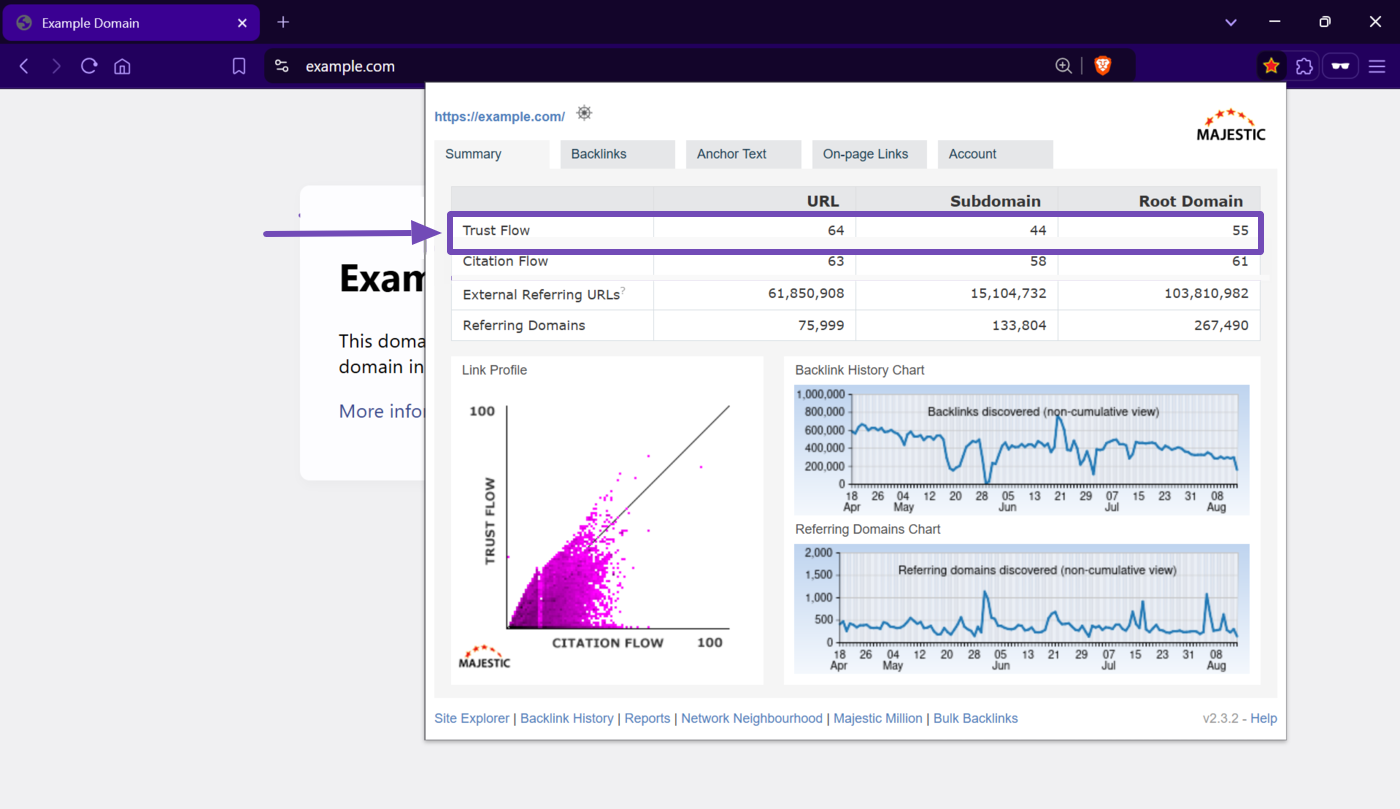
The extension will also reveal multiple other metrics, including the citation flow, external referring URLs, and referring domains. You will typically evaluate these metrics alongside the trust flow.
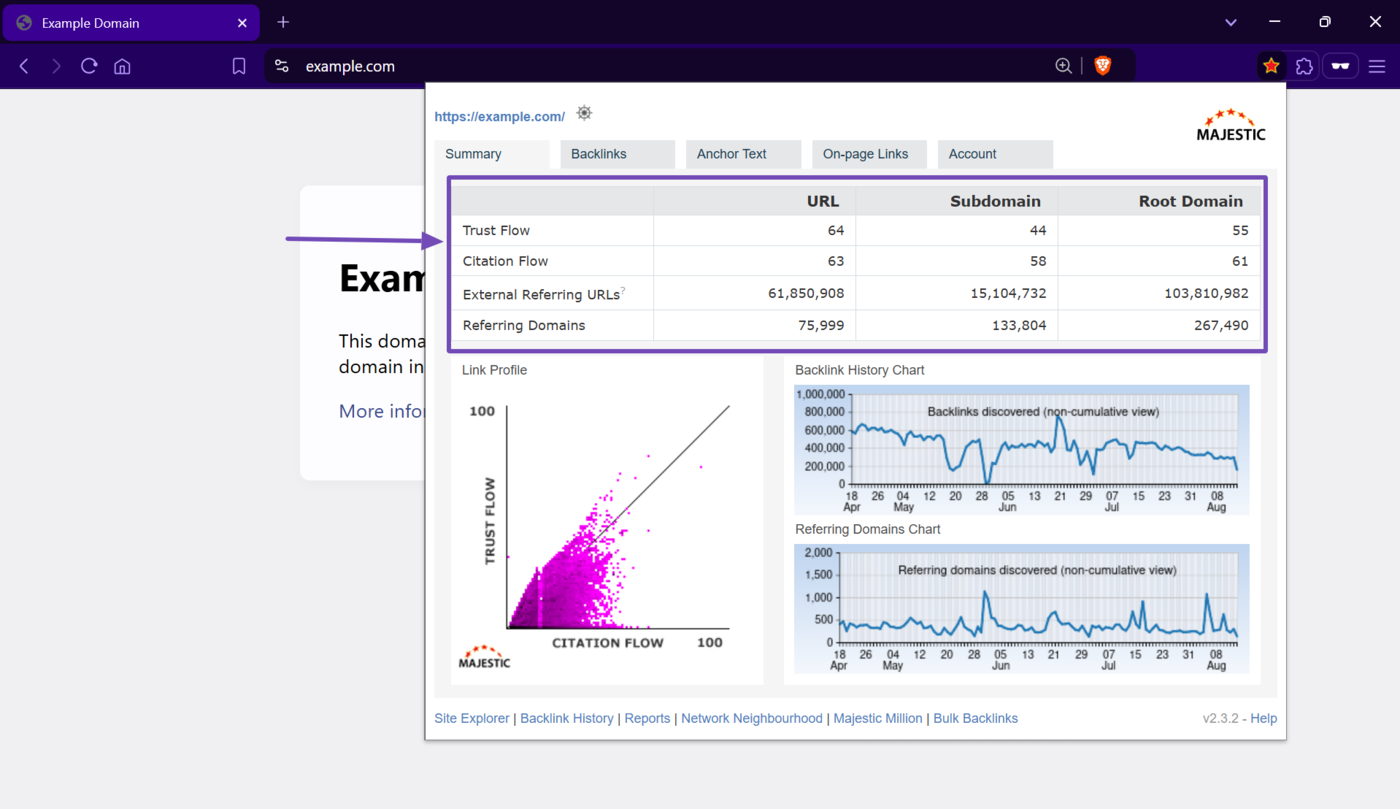
2 Majestic Site Explorer
To use the Majestic site explorer, head to Majestic SEO. Then enter the URL into the available field and click the search icon, as shown below. (Note that you will be required to register.)

Optionally, if you already have an account, log in, and enter your URL into the available field. Once done, click the search icon.
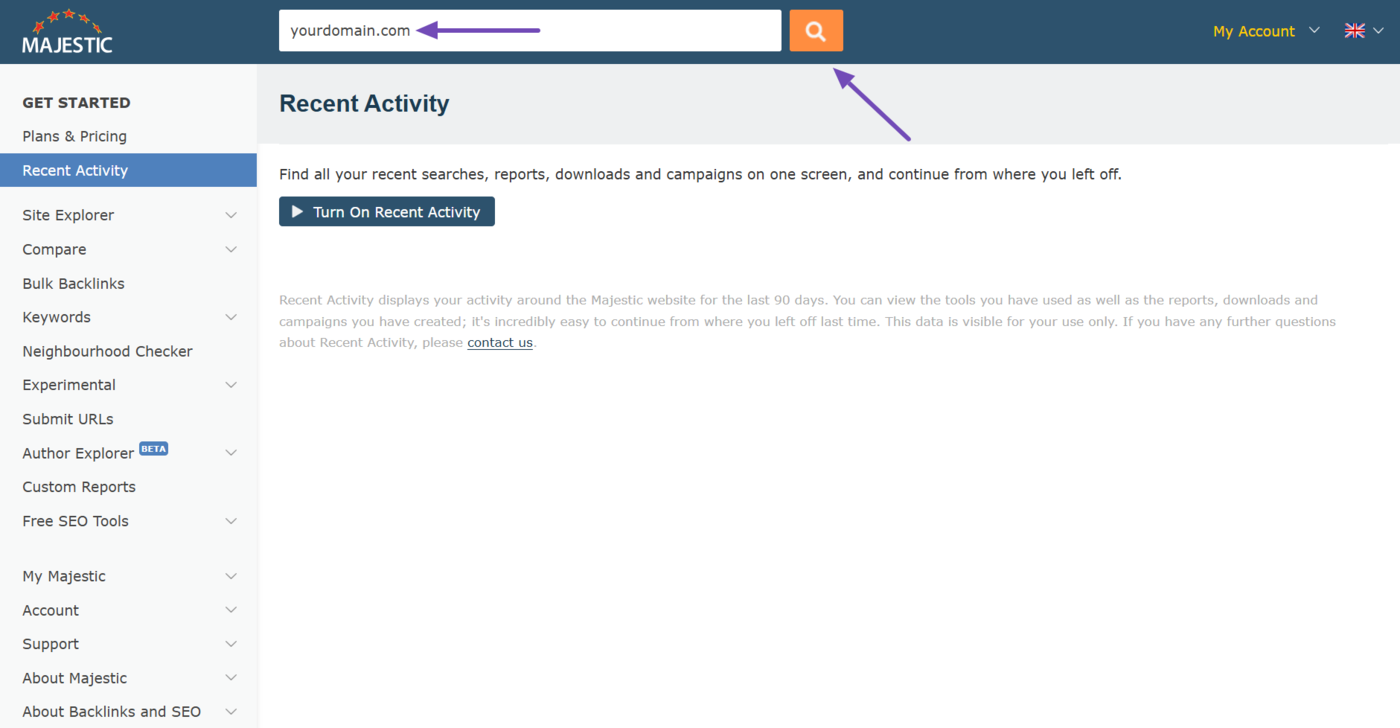
The tool will return the trust flow score for the URL. It will also return multiple metrics, including the citation flow, external inbound links, and referring domains.